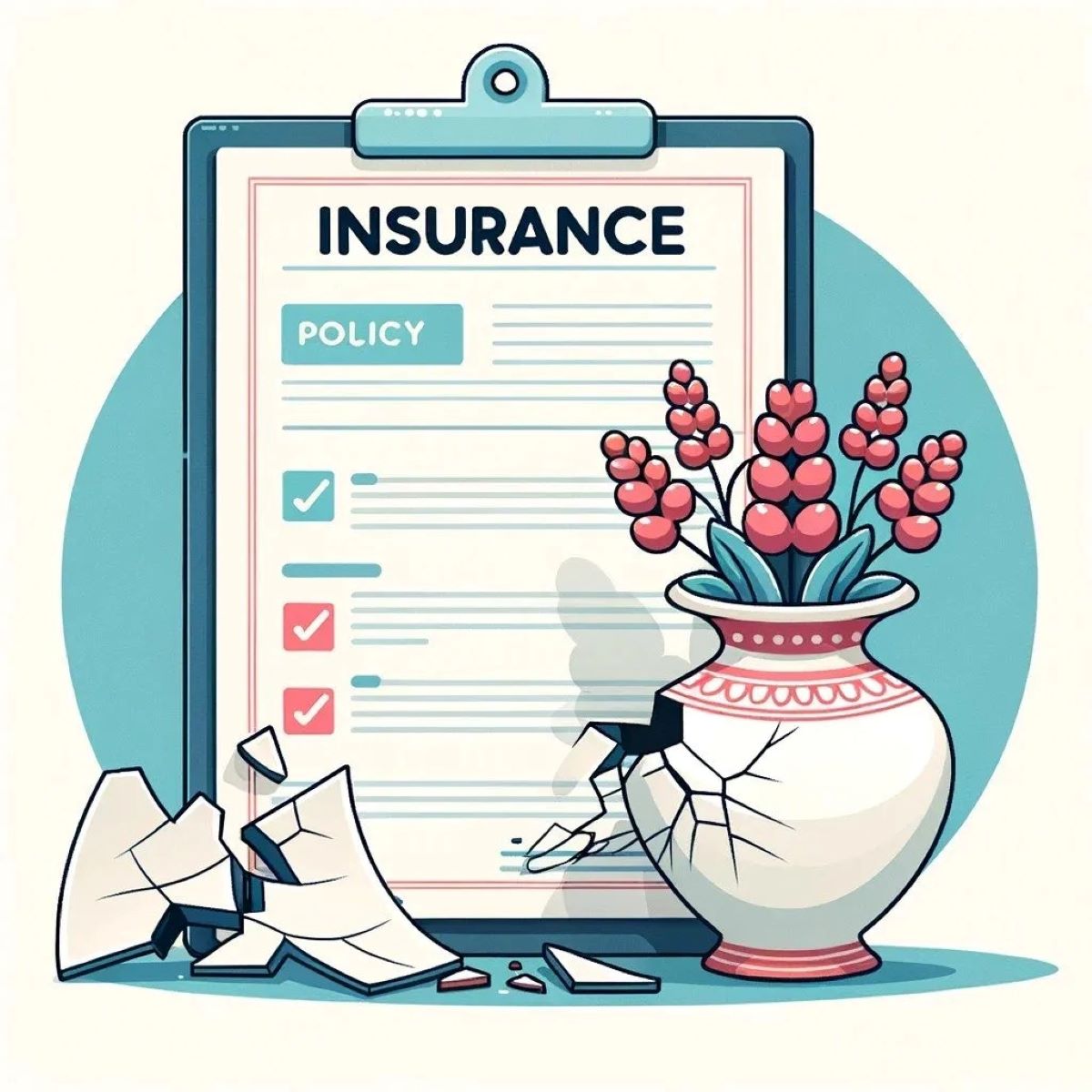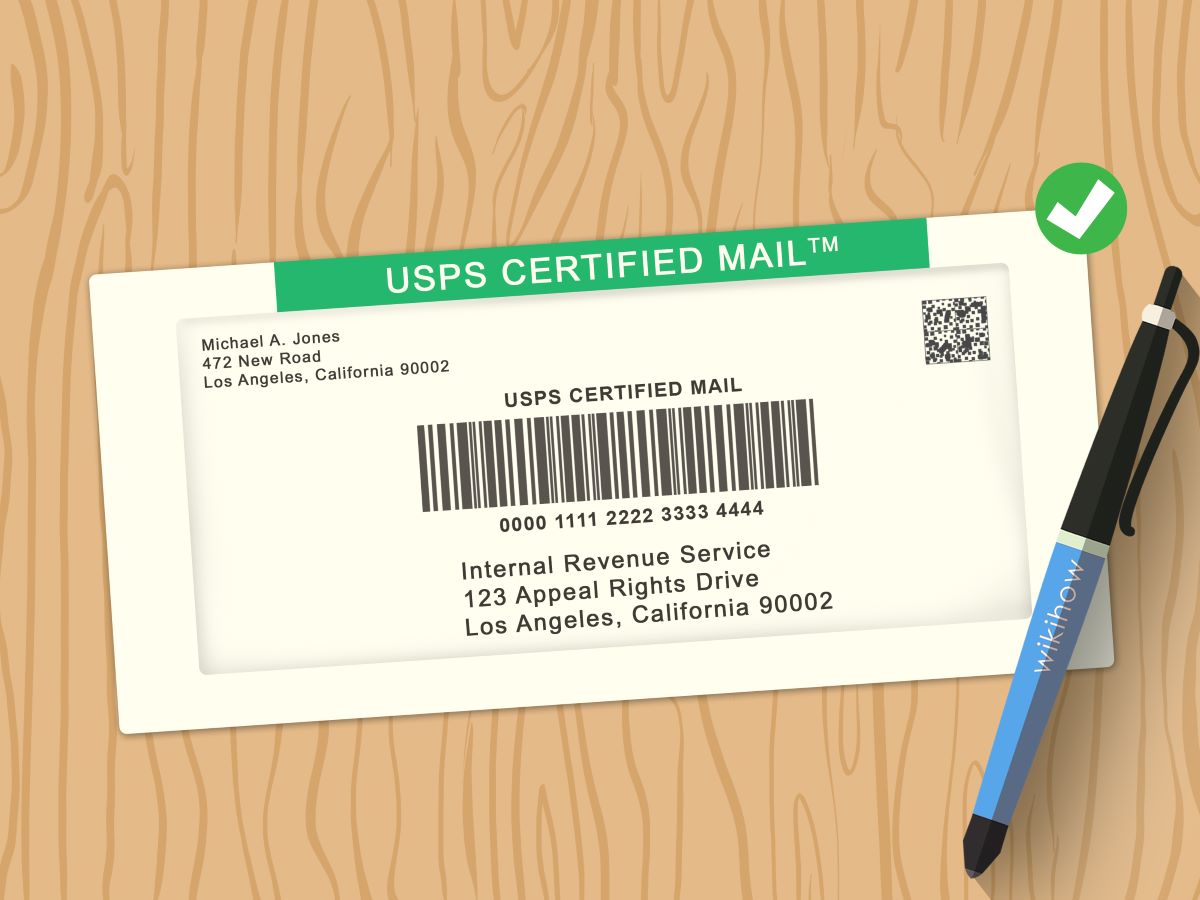

Finance
How To Write A Business Proposal For Funding
Modified: February 21, 2024
Learn how to write a compelling business proposal for funding in the finance industry. Gain tips and strategies to secure the financial support you need.
(Many of the links in this article redirect to a specific reviewed product. Your purchase of these products through affiliate links helps to generate commission for LiveWell, at no extra cost. Learn more)
Table of Contents
Introduction
Welcome to the world of business proposals! If you’re seeking funding for your business or project, a well-crafted business proposal is a crucial tool to help you secure the resources you need. Whether you’re approaching investors, banks, or potential partners, a compelling business proposal can make all the difference.
In this guide, we will walk you through the step-by-step process of writing a business proposal for funding. From conducting thorough research to presenting a comprehensive financial plan, we’ll cover all the key elements that will help you create a persuasive and professional proposal.
A solid business proposal serves as a roadmap for your venture, outlining your vision, goals, and strategies to attract investors or lenders. It showcases your understanding of the market, highlights the unique value of your offering, and demonstrates the viability and profitability of your business.
Keep in mind that writing a business proposal requires both creativity and thoroughness. You need to strike a balance between presenting a captivating narrative and providing concrete facts and figures. Your proposal should inspire confidence in your venture while backing it up with solid research and analysis.
Throughout this article, we’ll provide you with valuable tips and insights to help you craft a winning business proposal. We’ll guide you through the research and preparation phase, explain each essential section of the proposal, and offer suggestions on how to optimize your proposal for a successful outcome.
Remember, a well-prepared and compelling business proposal is your key to unlocking the funds you need to bring your ideas to life. So let’s dive into the process, shall we?
Research and Preparation
Before diving into the writing process, it’s crucial to conduct thorough research and preparation. This step sets the foundation for a strong business proposal and ensures that you have a solid understanding of your market, industry, competitors, and target audience.
Start by identifying your target audience and understanding their needs and pain points. Research their preferences, demographics, and purchasing behaviors. This information will help you tailor your proposal to align with their interests and showcase how your offering solves their problems.
Next, analyze your industry and market trends. Stay updated on the latest developments, emerging technologies, and consumer demands. Identify any potential gaps or opportunities in the market that your business can capitalize on. This analysis will not only demonstrate your industry knowledge but also show potential investors that you are well-positioned to succeed.
Take the time to study your competitors. Identify their strengths, weaknesses, and unique selling points. Determine what sets your business apart and highlight your competitive advantage in your proposal. Understanding your competition will also help you fine-tune your marketing and sales strategies to differentiate yourself in the market.
During the research phase, gather relevant data and statistics to support your claims and projections. Whether it’s market research reports, financial data, or industry case studies, having solid evidence will strengthen the credibility of your proposal.
Additionally, it’s essential to understand your own business inside and out. Develop a clear and concise mission statement, define your business goals, and articulate your core values. Outline your products or services, pricing strategy, and revenue models. Having a comprehensive understanding of your own business will enable you to effectively communicate your vision and objectives in the proposal.
Finally, consider the financial aspects of your venture. Create financial projections, including revenue forecasts, profit margins, and cash flow analysis. Investors want to see a clear path to profitability, so ensure that your projections are realistic and based on sound assumptions.
The research and preparation phase may seem time-consuming, but it is a crucial step to ensure the success of your business proposal. It will provide you with the knowledge and insights needed to create a comprehensive and compelling document that captures the attention of potential funders.
Executive Summary
The executive summary is arguably the most important section of your business proposal. It serves as a snapshot of your entire proposal, summarizing the key elements and enticing the reader to delve deeper into the details. An effective executive summary can make a significant difference in capturing the attention of potential funders and piquing their interest in your venture.
In this section, provide a concise and compelling overview of your business, highlighting the most critical points. Start with a strong opening statement that grabs the reader’s attention and clearly communicates the purpose of your proposal. Paint a compelling picture of your business and the unique value you bring to the market.
Next, briefly outline your business concept, products or services, and target market. Clearly articulate the problem you are addressing and how your offering solves it. Highlight the market opportunity and demand for your solution, showcasing the potential for growth and profitability.
Describe your business’s competitive advantage and explain why you are well-positioned to succeed. Emphasize any unique features, intellectual property, or strategic partnerships that set you apart from competitors. This will demonstrate that you have a distinct value proposition that can lead to a sustainable competitive edge.
Mention your business’s mission, vision, and core values to showcase the purpose and principles driving your venture. Investors appreciate companies that have a strong sense of purpose and a clear direction for their growth.
Dive into your financial projections, highlighting the revenue potential and expected return on investment. Present your key financial metrics, such as projected sales, profit margins, and cash flow projections. This will give potential funders a sense of the financial viability and scalability of your business.
Lastly, include a clear and concise funding request. State the amount of funding you are seeking and how it will be used to support your business’s growth. Be specific and transparent about your funding needs to instill confidence in potential investors or lenders.
Overall, the executive summary should be persuasive, engaging, and leave the reader wanting to learn more. It should effectively convey the uniqueness and potential of your business, making a compelling case for why it deserves funding.
Remember, the executive summary sets the tone for your entire business proposal, so invest time in crafting a captivating summary that grabs the reader’s attention from the start.
Problem Statement
In the problem statement section of your business proposal, you need to clearly and concisely outline the problem or pain point that your business is addressing. This is your opportunity to highlight the challenges or inefficiencies in the market that your product or service aims to solve.
Start by identifying the specific problem you are addressing. Provide a clear description of the pain point that customers in your target market are experiencing. Use data, research, or anecdotal evidence to support your claims and demonstrate the widespread nature and impact of the problem.
Next, illustrate the negative consequences or limitations that arise from this problem. Highlight how it hinders productivity, causes financial losses, or negatively affects customer satisfaction. By emphasizing the severity and implications of the problem, you can convey the urgency of finding a solution.
It is also important to showcase the current inadequacies of existing solutions or alternatives. Explain why the current options in the market are insufficient or ineffective in fully addressing the problem. This will further emphasize the need for your unique offering.
When presenting the problem statement, make sure to align it with the larger market and industry trends. Demonstrate that the problem is not an isolated issue but a widespread concern faced by many potential customers. By doing so, you can position your business as a valuable solution provider in an evolving and growing market.
Keep in mind that the problem statement should be concise and focused. Avoid overwhelming the reader with excessive details or unnecessary information. Instead, zero in on the core problem and its impact, making a clear and compelling case for your business’s relevance and necessity.
Lastly, be sure to connect the problem statement to your proposed solution. Transition seamlessly from discussing the problem to introducing how your product or service effectively addresses it. This helps the reader understand the connection between the problem and your business’s value proposition, setting the stage for the subsequent sections of your business proposal.
By clearly articulating the problem statement, you can create a sense of empathy with potential funders and highlight the significance of your business in addressing a pressing need in the market. The problem statement primes the reader to see the value and potential of your solution, making it a crucial component of a persuasive business proposal.
Proposed Solution
In the proposed solution section of your business proposal, you have the opportunity to present your innovative and unique solution to the problem identified in the previous section. This is the chance to showcase how your product or service fills the gap in the market and effectively addresses the pain points of your target audience.
Start by providing a concise and clear description of your solution. Explain how your offering solves the identified problem and improves the lives or businesses of your customers. Emphasize the key features and benefits that set your solution apart from existing alternatives.
Illustrate how your solution effectively mitigates the negative consequences or limitations outlined in the problem statement. Show how it improves efficiency, reduces costs, enhances productivity, or increases customer satisfaction. Use concrete examples, case studies, or testimonials to demonstrate the real-life impact of your solution.
It is crucial to highlight the unique value proposition of your solution. What makes your offering different from competitors? Is it a breakthrough technology, a novel approach, or a combination of services that no one else provides? Clearly articulate the unique selling points that make your solution stand out.
Furthermore, explain how your solution aligns with current market and industry trends. Describe how it leverages emerging technologies, caters to evolving customer preferences, or capitalizes on market gaps. This showcases your ability to adapt and stay ahead in a dynamic business environment.
Support your claims with market research and data. Present statistics, trends, or industry reports that validate the effectiveness and potential success of your solution. This helps build credibility and demonstrates your understanding of the market landscape.
When discussing the proposed solution, use language that is accessible and easy to understand. Avoid technical jargon or excessive complexities. Instead, focus on presenting the benefits in a clear and relatable manner, so that even non-experts can grasp the value of your solution.
Finally, it is important to outline your plan for implementing the solution. Explain the steps you will take to bring your offering to market, including product development, manufacturing, distribution, or service delivery. Outline your timeline, milestones, and key deliverables to demonstrate your preparedness and commitment to executing your business plan.
By effectively communicating your proposed solution, you can capture the attention and interest of potential funders. Demonstrate how your innovative and differentiated offering resolves a pressing problem, positioning your business for success in the marketplace.
Market Analysis
In the market analysis section of your business proposal, you need to provide a comprehensive overview of your target market, its size, trends, and dynamics. This section helps potential funders understand the potential market opportunity and assess the viability of your business within it.
Start by defining your target market. Describe the specific demographic, geographic, and psychographic characteristics of your ideal customers. This helps investors understand the specific niche you are targeting and how well your solution aligns with their needs and preferences.
Next, provide an analysis of the market size and growth potential. Utilize market research data and industry reports to showcase the size of the addressable market and its projected growth rate. This demonstrates the scalability and revenue potential of your business.
It’s also important to analyze the market dynamics and trends. Highlight any emerging technologies, regulatory changes, or consumer behavior shifts that are shaping the market. A thorough understanding of the current and future trends provides insight into the longevity and adaptability of your business.
Identify your direct and indirect competitors and analyze their market position, strengths, and weaknesses. Assess their pricing strategies, customer base, and market share. This analysis helps you understand the competitive landscape and positions your business to differentiate itself effectively.
Furthermore, conduct a SWOT analysis (Strengths, Weaknesses, Opportunities, and Threats) to evaluate the internal and external factors that impact your business. Identify your unique strengths that give you a competitive advantage, while also acknowledging any weaknesses or challenges that need to be addressed.
As part of the market analysis, it is crucial to outline your marketing and sales strategy. Explain how you plan to reach your target customers and communicate the value of your solution. Discuss your pricing strategy, distribution channels, and marketing tactics. This demonstrates your understanding of how to effectively penetrate the market and generate revenue.
Throughout the market analysis, use data and statistics to support your statements and projections. Cite reputable sources and provide clear references to back up your claims. This adds credibility to your proposal and helps potential funders trust your market analysis.
By conducting a thorough market analysis, you demonstrate a deep understanding of your target market and its potential. This gives investors confidence in your business’s ability to succeed and grow within the market, increasing the chances of securing funding.
Marketing and Sales Strategy
In the marketing and sales strategy section of your business proposal, you need to outline how you plan to promote and sell your product or service to your target audience. This section demonstrates your understanding of the customer acquisition process and your ability to generate revenue.
Start by clearly defining your target market. Revisit the demographic, geographic, and psychographic characteristics of your ideal customers. This helps you tailor your marketing and sales efforts to effectively reach and engage your target audience.
Next, explain the marketing channels you will utilize to reach your customers. Will you focus on digital marketing, traditional advertising, or a combination of both? Describe your strategies for social media marketing, search engine optimization, content marketing, email marketing, or any other channels relevant to your business.
Provide insights into your branding and messaging. Elaborate on the unique value proposition you want to communicate and how it differentiates you from competitors. Discuss your brand positioning, tone of voice, and visual identity. A strong and consistent brand image helps build trust and attract customers.
Detailed explanations of your promotional campaigns and tactics are also important. Outline any planned events, partnerships, or collaborations that will enhance your visibility and reach. This could include attending trade shows, sponsoring industry events, or leveraging influencer marketing.
Additionally, explain your sales strategy. Will you have an in-house sales team, rely on distribution partners, or utilize e-commerce platforms? Describe the sales process, including lead generation, qualification, and conversion. Discuss your pricing strategy, discounts, and any incentives you plan to offer to drive sales.
Metrics and analytics are crucial in evaluating the success of your marketing and sales efforts. Explain the key performance indicators (KPIs) you will track to measure the effectiveness of your marketing campaigns and sales activities. Discuss how you will analyze the data and make data-driven decisions to optimize your strategies.
Finally, in this section, provide a timeline and milestones for your marketing and sales initiatives. Outline when you plan to launch specific campaigns, roll out new features or products, or expand into new markets. This demonstrates your proactive approach and ability to execute your marketing and sales plans.
By presenting a well-thought-out marketing and sales strategy, you convince potential funders that you have a clear plan for acquiring customers and generating revenue. It showcases your understanding of the market and your ability to effectively market and sell your product or service.
Operational Plan
In the operational plan section of your business proposal, you need to outline how your business will operate on a day-to-day basis. This section provides an in-depth understanding of your business’s infrastructure, processes, and resources.
Start by describing your business’s physical location or facilities. Explain the size, layout, and amenities of your workspace. If you don’t have a physical location, discuss your plans for remote work or shared office spaces. Provide details on any necessary equipment, technology, or machinery required to run your operations efficiently.
Next, outline your organizational structure and key roles within your company. Describe the management team, their responsibilities, and their relevant experience. Explain your hiring and staffing plans, including any projected growth in personnel as your business scales.
Detail the processes and workflows that drive your business operations. This can include product development, inventory management, quality control, order fulfillment, or service delivery. Highlight any unique approaches or proprietary methodologies that give you a competitive advantage.
It’s essential to address any legal and regulatory requirements that govern your business operations. Discuss the permits, licenses, or certifications necessary for your industry or specific activities. Demonstrate your commitment to compliance and adherence to industry standards.
Consider the technology and systems that will support your operations. Discuss your IT infrastructure, software applications, or customer relationship management (CRM) tools that you will utilize. Explain how these technologies will enhance your efficiency, productivity, and customer service.
Address the scalability and growth potential of your operations. Identify any potential bottlenecks or challenges that may arise as your business expands. Outline your strategies for scaling your operations, such as expanding production capacity, optimizing supply chains, or outsourcing certain functions.
Describe your vendor and supplier relationships. Explain how you will choose and manage your suppliers to ensure the quality and timely delivery of goods or services. If applicable, discuss any strategic partnerships or collaborations that enhance your operations.
Lastly, discuss your contingency plans for any potential risks or challenges that could impact your operations. Address scenarios such as equipment failure, supply chain disruptions, or changes in market demand. Show investors that you have considered these risks and have strategies in place to minimize their impact.
By providing a clear operational plan, you demonstrate that you have thought through the details of how your business will function on a day-to-day basis. This showcases your preparedness and professionalism, making a strong case for the feasibility and sustainability of your business.
Financial Plan
In the financial plan section of your business proposal, you need to provide a comprehensive overview of your financial projections, including revenue forecasts, expenses, and funding requirements. This section demonstrates the financial viability and potential profitability of your business.
Start by providing an executive summary of your financial plan, highlighting the key financial metrics and projections. This allows investors to quickly grasp the financial health of your business and its growth potential.
Outline your revenue projections for the upcoming years. Clearly articulate the sources of your revenue and explain how you arrived at your revenue forecasts. Consider factors such as pricing, market demand, sales volume, repeat business, and customer acquisition rates. Ensure that your revenue projections are realistic and based on industry benchmarks and data.
Next, list your anticipated expenses. This includes both fixed and variable costs, such as rent, salaries, utilities, raw materials, marketing expenses, and overheads. Provide a breakdown of your expenses and explain any major cost drivers.
It’s essential to include a detailed cash flow projection. This forecast demonstrates the flow of money in and out of your business. It ensures that you have sufficient funds to cover your expenses and repay any debts. A healthy cash flow projection is crucial for the long-term sustainability of your business.
Consider creating a profit and loss statement, also known as an income statement. This statement summarizes your revenue, costs, and expenses to determine your net profit or loss. It provides a snapshot of your business’s financial performance and helps assess its profitability.
Besides the revenue and expenses, discuss your balance sheet. This financial statement provides an overview of your business’s assets, liabilities, and equity. It demonstrates the financial position of your business at a specific point in time and helps illustrate its stability and strength.
Additionally, address funding requirements in this section. Clearly state the amount of funding you are seeking and explain how you will utilize the funds. Provide a breakdown of how the funds will be allocated, such as product development, marketing campaigns, or operational expenses. This showcases your financial planning and transparency.
Lastly, it’s important to include any supporting documentation or financial analysis that strengthens your financial plan. This may include historical financial statements, market research data, or industry benchmarks. These additional details provide investors with a deeper understanding of the financial health of your business.
By presenting a well-structured and comprehensive financial plan, you demonstrate your ability to manage the financial aspects of your business effectively. It instills confidence in potential funders, showing them that you have a clear understanding of your business’s financial viability and potential for growth.
Funding Request
In the funding request section of your business proposal, you need to clearly and specifically state the amount of funding you are seeking and explain how the funds will be used to support your business’s growth and development.
Begin by stating the exact amount of funding you are requesting. Be specific and provide a breakdown of how the funds will be allocated to different areas of your business. For example, you might need funds for product development, marketing and advertising, hiring personnel, equipment, or expanding into new markets.
Explain the rationale behind your funding request. Discuss the specific needs and opportunities that necessitate the additional capital. Highlight the potential return on investment and growth potential that the funding will unlock for your business.
When discussing the use of funds, provide a detailed explanation of how the funds will be allocated and how they will contribute to the success of your business. For each area or activity that requires funding, outline the specific costs and benefits. This shows potential funders that you have thoroughly evaluated your needs and have a strategic plan for utilizing the funds.
Consider addressing the timeline for fund utilization. Explain when you anticipate needing the funds and how you plan to phase the funding in relation to your business’s growth milestones. This demonstrates your preparedness and your ability to manage the funds effectively.
While it is important to be clear about your funding request, it is equally important to justify the funding amount. Provide a detailed financial analysis and projections that support your request and show potential funders the potential return on investment.
Additionally, discuss the potential exit strategies for investors if applicable. Explain the options for investors to realize their investment, such as through a public offering, acquisition, or buyback of shares. This demonstrates your understanding of the investor’s perspective and commitment to their interests.
Finally, conclude the funding request section by expressing your appreciation for the potential funders’ consideration and your willingness to provide any additional information they may require. Reiterate your confidence in your business’s potential and your commitment to success.
By clearly and persuasively presenting your funding request, you increase the chances of securing the financial support you need to take your business to the next level. Show potential funders that you have a well-thought-out plan for the funds, backed by solid financial projections and a clear understanding of the potential return on investment.
Conclusion
In conclusion, this business proposal provides a comprehensive overview of your venture, highlighting its unique value proposition, market potential, and financial projections. You have taken potential funders through a journey of understanding the problem you aim to solve, the innovative solution you have developed, and how you plan to market, sell, and operate your business.
The strategic research and preparation conducted to support this proposal demonstrate your commitment to success and your understanding of the market and industry trends. Your proposed solution effectively addresses the identified problem, emphasizing your competitive advantage and the potential for growth and profitability in the market.
The market analysis provides a thorough understanding of your target audience, industry dynamics, and competitive landscape. Your marketing and sales strategies showcase your ability to effectively reach customers, differentiate your offering, and generate revenue. The operational plan demonstrates your capabilities in managing the day-to-day operations and scaling your business for future growth.
The financial plan outlines the revenue projections, expenses, and funding requirements for your business. It showcases your financial acumen and provides potential funders with a clear understanding of the potential return on investment. The funding request section clearly articulates the specific nature of your funding needs, how the funds will be utilized, and the potential impact it will have on your business.
In closing, this business proposal is a comprehensive, compelling, and well-researched document that highlights the viability and potential of your venture. It demonstrates your thorough understanding of the market, your innovative solution, and your strategic plans for growth and success.
Thank you for considering this business proposal, and we welcome the opportunity to discuss it further and provide any additional information or clarification. We are confident that with your support, our business will achieve the success and impact we envision.
Appendices
In the appendices section of your business proposal, you can include supplemental information that supports and enhances the content of your proposal. These documents provide additional context, evidence, and credibility to reinforce your claims and strengthen the overall proposal.
Here are some examples of documents that you may consider including in the appendices:
- Market research reports: Include market research data, surveys, or studies that validate the demand for your product or service. This adds credibility to your market analysis and demonstrates that you have conducted thorough research.
- Financial statements: Include past financial statements, such as balance sheets, profit and loss statements, and cash flow statements. These statements provide a historical financial snapshot of your business and show its financial health and stability.
- Case studies: Include case studies or success stories that showcase how your product or service has benefited previous customers. This demonstrates the value of your offering and provides tangible evidence of its effectiveness.
- Contracts or agreements: Include any relevant contracts, agreements, or partnerships that you have established. This includes distribution agreements, strategic partnerships, or licensing agreements. These documents show that you have secured key relationships or collaborations to support the growth of your business.
- Professional portfolios: If applicable, include professional portfolios or resumes of key team members or founders. This provides additional credibility by highlighting the expertise, skills, and experience of your team.
- Legal and regulatory documents: Include any permits, licenses, or certifications required for your business operations. This demonstrates your commitment to compliance and adherence to industry regulations.
- Product demonstrations or prototypes: If you have a physical product, include images, videos, or prototypes that illustrate its features and functionality. This provides a visual representation of your product and helps potential funders understand its value.
Ensure that the documents included in the appendices are relevant, organized, and clearly labeled. Refer to them within the main body of the proposal when necessary, to direct readers to the corresponding appendices.
While the appendices section is optional, it can significantly enhance the persuasiveness and credibility of your business proposal. It allows potential funders to delve deeper into the supporting documents and gain a more comprehensive understanding of your business and its potential for success.














